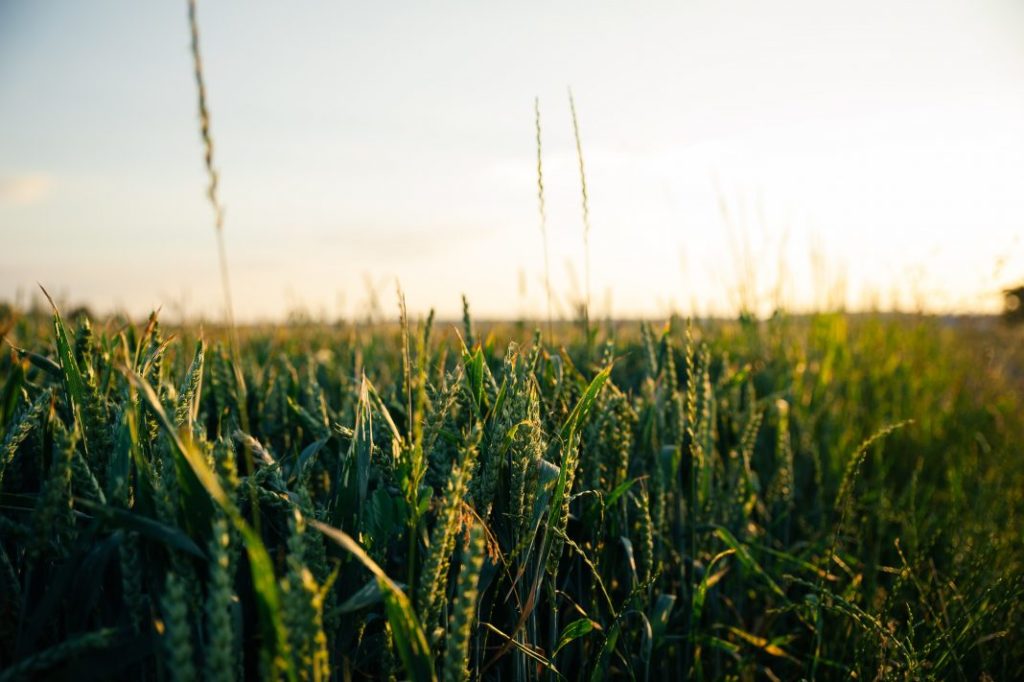
Projections from the United Nations suggest that the global population reached 8 billion in 2022. By 2030, the United Nations expect the population will grow to 8.5 billion (1). In order to sustain the rapidly expanding global population, innovative approaches in the agriculture sector are required to ensure food security and safety while maintaining sustainable practices.
Centuries of cultivating crops and raising livestock have honed our current agricultural methods. In the 21st century, these techniques encounter persistent challenges. Environmental factors such as soil degradation, water scarcity, and climate change pose significant threats to production. Additionally, the constant risks posed by pests and diseases can devastate both crops and livestock.
Read more about how the current avian flu crosses species and affects livestock.
The agriculture sector’s challenge of feeding the world sustainably lies in the limited access to natural resources like land and water. Unfortunately, these resources don’t grow with our population, so we need to find a way to increase productivity per unit of land (2). Ideally, using less water and potentially harmful pesticides.
Biotechnology offers innovative solutions that support sustainable agriculture practices to not only enhance food production, but also increase nutritional value and safety of our food supply.
Biotechnology in Agriculture: Enhancing Crop Yield and Resilience:
For much of the history of agriculture, breeding programs have involved selectively breeding desirable traits to increase yield, quality, and resilience. In the age of biotechnology, agriculturalists are revolutionizing this practice with the help of cloning and CRISPR technologies.
At its core, cloning allows for production of genetically identical organisms. It is used to maintain lineages of high yield or disease resistant populations. By cloning select individuals, farmers and scientists can ensure reproduction of desirable traits across generations, effectively maintaining a genetic library of characteristics identified as valuable for agricultural purposes.
To manage genetic libraries, farmers and scientists can selectively breed or use CRISPR-Cas9 to genetically edit traits and incorporate or enhance these traits within a crop or livestock population. Such traits could include cattle genetically selected for reduced methane emissions or genome-edited rice that can produce grains 30% larger than unmodified varieties (3, 4).
Ensuring Safety and Quality with Biotechnology:
Biotechnology is at the forefront of enhancing food safety diagnostics and mitigating health risks in our food supply. One of the most prevalent contributions is the use of genomics to detect the presence of and identify pathogens. This ensures the safety of food products in the supply chain and mitigates the risk of foodborne illnesses. Genomics, specifically Next-Generation sequencing, plays a critical role in enabling the rapid and precise identification of microorganisms that cause foodborne illness (5). This ability to trace pathogens through supply chains is crucial for effective recalling, pinpointing sources of contaminations, and preventing spread.
Authenticity of food can also be verified by genetic identification. These genetic identity methods can identify species-specific DNA markers which can detect substitutions or alterations to food quality that can have harmful effects on health (6). Genetic screening can also confirm the presence of genetically modified organisms (GMOs), addressing both consumer preferences and regulatory requirements.
How Promega Contributes to Food Security
Promega provides technologies such as the Wizard® Magnetic DNA Purification System for Food and the Maxwell® RSC PureFood GMO and Authentication Kit to support agricultural producers in ensuring food security, safety and authenticity. These tools are essential for verifying the authenticity and genetic modifications in crops. This ensures compliance with global GMO regulations, enhancing consumer trust and safety.
While the Wizard® System enables manual, rapid and reliable isolation of DNA from a diverse array of food sources, the Maxwell® RSC PureFood Kit automates DNA purification, which facilitates a more efficient workflow for testing food authenticity and safety. Designed with simplicity, flexibility and scalability in mind, our automated Maxwell systems can process up to 16 or up 48 samples at once in an easy-load and go workflow. In providing these technologies, Promega supports the agricultural sector in ensuring a safe, trustworthy food supply, contributing to the broader objective of global food security.
Read more about how the Maxwell® RSC PureFood Kit is being used to fight plant pathogens like Xylella fastidiosa.
Conclusion: Biotechnology as a Keystone of Modern Food Security
With rising global population comes an urgent need for methods to boost food production without compromising environment or consumer health. Genetic engineering and breeding programs are key strategies for increasing yield and resilience against pests, diseases, and climate challenges. By enhancing crop resilience, food authenticity and safety, and promoting sustainable practices, the partnership between agriculture and biotechnology addresses immediate food production challenges and lays the groundwork for global food security. Promega technologies and solutions play a vital role in this effort, providing precise and reliable tools that meet bioanalytical needs related to sustainability, food security, and food safety.
References:
- United Nations Department of Economic and Social Affairs. (2022). World population to reach 8 billion on 15 November 2022.
- Pawlak, K. & Kolodziejczak, M. (2020). The Role of Agriculture in Ensuring Food Security in Developing Countries: Considerations in the Context of the Problem of Sustainable Food Production. Sustainability, 12(13), 5488.
- Xu, R., Yang, Y., & Qin, R.(2016). Rapid improvement of grain weight via highly efficient CRISPR/Cas9-mediated multiplex genome editing in rice. Journal of Genetics and Genomics, 43(8), 1673-8527.
- Gonzales-Recio, )., Lopez-Paredes, & J., Ouatachar, L. (2020). Mitigation of greenhouse gases in dairy cattle via genetic selection: 2. Incorporating methane emissions into the breeding goal. Journal of Dairy Science, 103(8), 7210-7211.
- American Society for Microbiology. (2021). Tracking pathogens via next-generation sequencing. ASM Magazine, Spring 2021 Issue.
- Vierira, M., Faustino, M., & Laurenco, T. (2022). DNA-Based Tools to Certify Authenticity of Rice Varieties—An Overview. Foods, 11(3), 258.
Kerstin Hurd
Latest posts by Kerstin Hurd (see all)
- Revolutionizing Food Security: How Biotechnology Contributes to Sustainability and Safety - June 26, 2024
- Reviewing the Importance of circRNA - November 14, 2023
- Glowing Testimonies: A Review of NanoLuc® Use in Model Organisms - October 6, 2023
